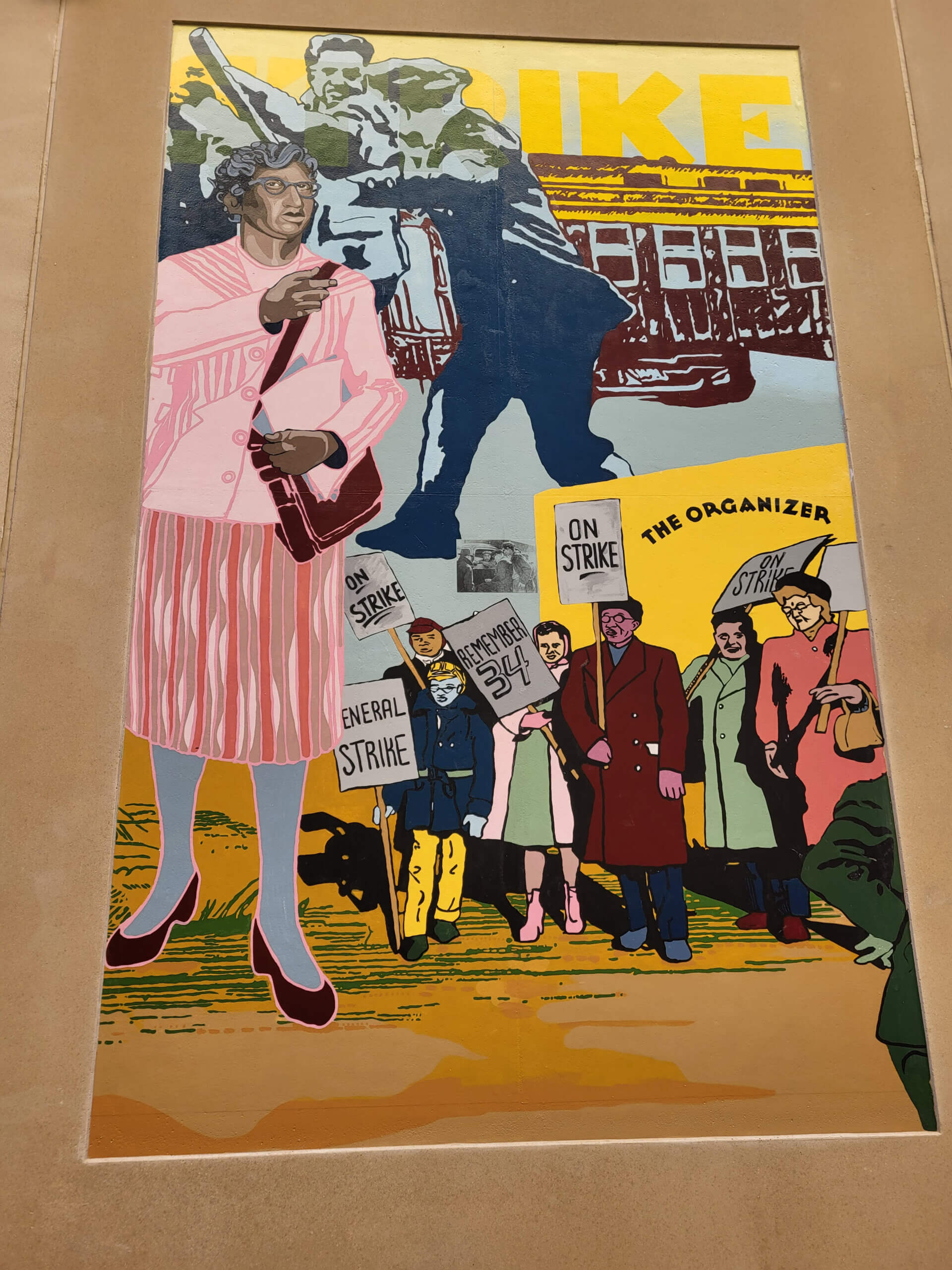Over the first three decades of the 20th century, Minneapolis was the most notorious “open shop” city in the country. An employers’ organization (the “Citizens’ Alliance”) leveraged the power of banks, manufacturers, and local government to resist workers’ attempts to unionize. In February 1934 the city’s truck drivers and coal yard workers organized and struck their industry, winning union recognition in a week. Their success inspired other truckers and warehouse workers to organize and strike twice, in the spring and summer of 1934, facing down the power of police and private “deputies.” Not only did 10,000 Minneapolis employees win union recognition, but they also inspired other workers to unionize in the Upper Midwest and across the country, and their strikes helped prompt Congress to pass the National Labor Relations Act in 1935.

Battle of Deputies Run, Minneapolis 1934

Women engaged in the Battle of Deputies Run, 1934, Minneapolis.
Over the ensuing 90 years local labor activists and scholars in the Twin Cities have celebrated the strikes’ anniversary once a decade, honoring its participants and connecting ongoing contemporary labor conflicts with this history. 2014 was the first occasion when no strikers were still alive, and the “Remember 1934” Committee (made up of labor activists from a variety of local unions) began identifying and involving strikers’ descendants, organizing a group of more than 130. This led to the idea of conducting oral history interviews with descendants about the stories they had been told by their parents and grandparents and the ways these experiences had shaped their own life choices. One terrific video has been completed and can be viewed with the fuller story. We also reached middle and high school teachers and students, generating a number of National History Day projects, two of which made it to the national competition. Our annual picnic, at Minnehaha Falls, took on added significance in July 2024 when Minneapolis Parks and Recreation workers, members of Laborers International Union Local 363, struck only weeks before the public gathering. They were the stars of the program, and they were joined on stage by activists from the Minnesota Nurses Association, the University of Minnesota Graduate Employees Union (UE), a Communications Workers local, and more. Collectively, we were embodying the theme of “1934 and Now.”
The “Remember 1934” Committee has also added visual art to our story-telling repertoire. In summer 2024 Keith Christensen curated an exhibit at the Minneapolis Central Library and organized a series of collateral community conversations. Six African American teen-aged artists, involved with Juxtaposition Arts, a Minneapolis youth artist education organization, engaged in the study of local labor history and created a massive mural on the exterior wall of a new building, one block away from the site of historic “Bloody Friday,” July 27, 1934. (See how the Juxta crew tells their own story of participation.)
This is indeed a living history.

Image Credit: Beth Cleary

Image Credit: Beth Cleary

Image credit: Beth Cleary
From 1982 to 2012, Peter Rachleff taught labor history at Macalester College in St. Paul, Minnesota. In 2014, with his partner Beth Cleary (who is also the source of the photographs accompanying this post), he co-founded the East Side Freedom Library (see https://eastsidefreedomlibrary.org).

From 1982 to 2012, Peter Rachleff taught labor history at Macalester College in St. Paul, Minnesota. In 2014, with his partner Beth Cleary (who is also the source of the photographs accompanying this post), he co-founded the East Side Freedom Library (see https://eastsidefreedomlibrary.org).

Spread the word